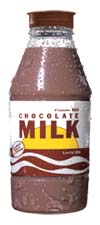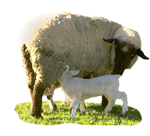
I’ve been reading up on Alfalfa production. The last issue of Hoard’s Dairyman featured the final installment of the 55th Annual Roundtable, this session focusing on Alfalfa production. the four dairies who were represented in the disuccion had various perspectives on the different plants actually in their Alfalfa stands. Some sowed in other cover crops, some preferred a little addtional grasses, and all were curious about the introduction of Roundup Ready Alfalfa to the mix. Curiosity is probably going to be spreading considerably now that the product is available at market. At the World Ag Expo in Tulare, CA last month, Monsanto Company introduced its newest member of the Roundup Ready family of products. The concept of introducing the Roundup Ready trait into Alfalfa seed is intended to give you a greater application window than conventional herbicides, theoretically giving you more flexibility in weed management. Monsanto’s Marketing Manger Chris Peterson noted that the product allowed for “superb weed control, crop safety, felxibility in application of herbicides, and that will translate into more yield and higher quality alfalfa for producers.
Monsanto developed the genetics with Forage Genetics International, and has liscensed the traits to several Seed companies: America’s Alfalfa, Crows, Dairyland, DeKalb, Doebler’s, Eureka, Farm Science Genetics, Fontanelle, Garst, Golden Harvest, Growmark, Jung, Legend, Midwest Genetics, Mycogen, NC+, NK, Pioneer, Stewart, Stone Tennessee Farmers Co-op, Trelay, and WL. AgriMarketing magazine notes that at the roll-out event, Monsanto also shared that there is enough seed on the market to plant roughly 4 million acres this year with production expected to far exceed that level for 2007. They also mention that while only 20% of alfalfa East of the Rockies is treated with herbicide annually, over 60% of the alfalfa West of the mountains is sprayed. The tech fees are expected to be $3/lb for the Western states and $2.50/lb East.






 A group of dairy farmers from Australia are in South America on a tour to learn more about the challenges their peers face. Here’s a photo, courtesy of tour sponsor,
A group of dairy farmers from Australia are in South America on a tour to learn more about the challenges their peers face. Here’s a photo, courtesy of tour sponsor, 
 Got sheep? Maybe some goats? Want to know more about how to milk them for an income? Plan to attend the
Got sheep? Maybe some goats? Want to know more about how to milk them for an income? Plan to attend the  The typical dairy cycle is for a producing cow to enter a dry period from between 45 and 60 days prior to calving. That cycle, however, may not be the most profitable production practice available.
The typical dairy cycle is for a producing cow to enter a dry period from between 45 and 60 days prior to calving. That cycle, however, may not be the most profitable production practice available. 